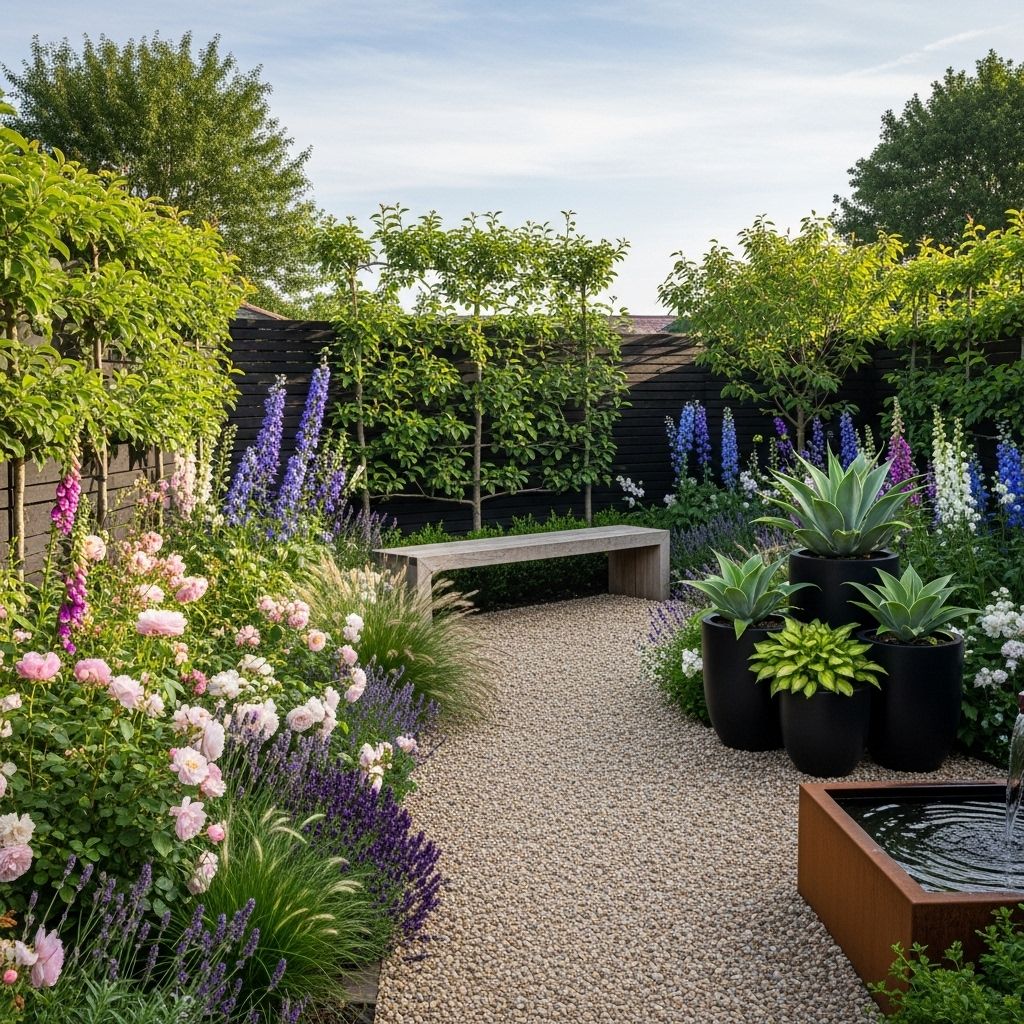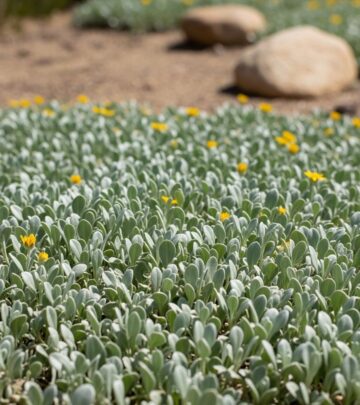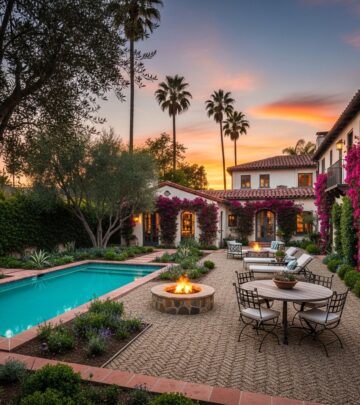Contemporary Cottage Garden Design: Essential Guide
Discover how two gardeners blend modern aesthetics with classic cottage charm in Upstate New York.

Image: HearthJunction Design Team
Creating a Contemporary Cottage Garden: Lessons from Upstate New York
In the rolling hills of Upstate New York, Eric and Christopher Feml-Nelsen have reimagined the classic cottage garden for the 21st century. Their personal journey blends cottage nostalgia with a crisp, modern twist, resulting in a garden that is lush, inviting, and cleverly structured. Dubbed the “Hydrangea Kings” for their unrivaled collection of over 140 hydrangea plants, the couple’s property has become a highlight of The Garden Conservancy’s Capital Region Open Days.
Table of Contents
- Introduction: What is a Contemporary Cottage Garden?
- Beginnings: Transforming a New York Property
- Hydrangea Heaven: The Garden’s Signature
- Design Principles: Blending Old and New
- Plant Choices: Beyond Hydrangeas
- Outdoor Living: Creating Inviting Spaces
- Maintenance and Year-Round Interest
- Lessons Learned and Advice
- Frequently Asked Questions
Introduction: What is a Contemporary Cottage Garden?
A contemporary cottage garden captures the abundant, layered look of traditional English cottage gardens while introducing modern structure, materials, and a fresh approach to planting. Whereas classic cottage gardens are often defined by informality and riotous blooms, their contemporary counterparts rely on a more deliberate backbone—crisp lines, defined spaces, and a curated plant palette—but never sacrifice the soul-soothing lushness that cottage styles evoke.
Beginnings: Transforming a New York Property
Eric and Christopher’s journey began with a sprawling, relatively featureless Upstate New York property. Their vision: to create a garden sanctuary where both old-world romance and contemporary sensibility could coexist. Key to their approach was understanding the property’s natural assets—sunlight, soil, and microclimates—and how to highlight them through thoughtful design.
“We wanted a garden that felt abundant but organized, personal but shareable,” recalls Eric. “It needed to welcome visitors but also feel like a private retreat.” This philosophy guided every decision, from layout to plant selection.
Hydrangea Heaven: The Garden’s Signature
No feature defines Eric and Christopher’s garden as distinctly as their love affair with hydrangeas. With more than 140 specimens, hydrangeas anchor the design, offering bold color, texture, and structure throughout the seasons.
- Variety is key: The couple grew an extensive collection including Hydrangea macrophylla (bigleaf), Hydrangea paniculata (panicle), and Hydrangea arborescens (smooth).
- Year-round impact: Hydrangeas provide spring leaf-out, lush summer blooms, and persistent dried flower heads for winter texture.
- Signature spaces: The “Hydrangea Room,” defined by a pair of classic Adirondack chairs, exemplifies their approach—a living sculpture gallery framed by cloud-like blossoms.
“We learned to let our passions dictate the plant palette. Hydrangeas are the backbone, but we layer in supporting players for diversity and resilience.”
To tap into the elegance of outdoor spaces, we invite you to experience our exploration of English garden design and timeless styles. Learn how to bring classic beauty to your own garden, leveraging traditional elements that never go out of fashion.
Design Principles: Blending Old and New
Though the garden brims with classic blooms, every space is defined by a contemporary edge. Eric and Christopher’s approach draws on several core design principles:
- Defined Geometry: Hardscape elements, such as paths and patios, feature straight lines and right angles, contrasting with the soft billows of planting beds.
- Color Cohesion: A restrained palette of greens, whites, blues, and pinks provides unity. Punctuations of deep burgundy or chartreuse add visual interest without chaos.
- Repetition and Rhythm: Repeating favorite plants—particularly hydrangeas—throughout the space lends rhythm, while varied textures maintain excitement.
- Garden ‘Rooms’: The property is divided into unique ‘rooms’ or spaces, each with a different mood but connected by common design themes.
Design Comparison Table
| Classic Cottage | Contemporary Cottage |
|---|---|
| Loose, informal shapes | Defined geometry and clear edges |
| Chaotic color and species mix | Curated, cohesive palette |
| Rustic materials | Modern hardscapes, metal, and stone |
| Flowery excess | Balance of structure and softness |
Plant Choices: Beyond Hydrangeas
While hydrangeas take center stage, the garden’s supporting cast is equally important. Eric and Christopher carefully selected species to thrive in New York’s climate and to provide continuous interest. Some highlights include:
- Perennials: Bleeding hearts, astilbes, and salvias offer late spring and summer color.
- Ornamental Grasses: Feather reed grass and blue fescue introduce movement and fine texture, playing off the hydrangeas’ broad leaves.
- Woody Accents: Japanese maples and dogwoods provide sculptural bones and autumn color.
- Trees: Crabapple trees frame views and shower the garden with spring blossoms.
- Bulbs and Ephemerals: Alliums, daffodils, and snowdrops spark early-season joy.
Each plant was chosen not just for looks but for resilience and adaptability to local conditions, ensuring the garden flourishes through New York’s unpredictable weather cycles.
Outdoor Living: Creating Inviting Spaces
Central to the couple’s philosophy is the integration of outdoor living. The garden is designed around human experience—places to sit, stroll, and savor garden views.
- Seating Areas: Adirondack chairs, benches, and small patios invite relaxation and conversation amidst the blooms.
- Pathways: Simple, rectilinear stone and gravel paths provide clear movement and echo the contemporary ethos.
- Flexible Entertaining: Open spaces accommodate gatherings, yet screens of foliage ensure privacy.
- Structure and Shelter: Pergolas, trellises, and small trees break up the space, offering both human scale and protection from the elements.
“A garden isn’t just to be seen—it’s to be lived in. We placed seats where we wanted to pause, not just where it looked right on a plan.”
Maintenance and Year-Round Interest
While lush and exuberant, the garden is designed for manageability. Eric and Christopher share a few maintenance strategies and tricks for keeping the space vibrant throughout four seasons:
- Mulching: Organic mulch suppresses weeds, retains moisture, and enriches the soil.
- Layered Planting: Groundcovers fill gaps, reducing the need for constant weeding and watering.
- Seasonal Pruning: Hydrangeas and shrubs are pruned at appropriate times for optimal flowering.
- Deadheading and Division: Perennials are deadheaded to extend bloom and divided every few years for vigor.
- Winter Structure: Ornamental grasses and hydrangea heads are left standing, offering sculptural interest and wildlife habitat.
Year-round beauty is a guiding principle; even in winter, the garden’s lines and textures remain pleasing.
Lessons Learned and Advice for Gardeners
Looking back, the couple reflects on successes, missteps, and the continual evolution that defines garden-making:
- Embrace Experimentation: Not every plant will thrive; experimenting is part of the joy.
- Plan for Scale: Start with small plants, but envision their mature size. Leave room for growth and airflow.
- Balance Passion with Restraint: While it’s tempting to collect every favorite, a cohesive palette creates harmony.
- Know Your Microclimates: Observe where sun, shade, and wind create unique conditions—and match plants accordingly.
- Make it Personal: Ultimately, a garden reflects its caretakers’ personalities and passions. Let your story shine through the planting.
Frequently Asked Questions (FAQs)
How many hydrangeas are in this garden?
The garden showcases over 140 hydrangea plants, blending different varieties for season-long interest.
What makes a cottage garden ‘contemporary’?
Contemporary cottage gardens combine lush, layered planting with defined geometry, a curated plant palette, and modern materials for a fresh yet timeless feel.
Can I create this look in a small city garden?
Absolutely. The principles—layered planting, defined spaces, focal points—scale beautifully to urban yards or even small courtyards. Compact shrubs and vertical elements like trellises can maximize impact.
What are some great plant choices for New York cottage gardens?
- Hydrangeas (varied forms)
- Bleeding heart, astilbe, and salvia
- Ornamental grasses (feather reed grass, blue fescue)
- Japanese maple, dogwood, crabapple
- Spring bulbs like allium and snowdrops
Is a contemporary cottage garden high maintenance?
Maintenance depends on plant selection and design. Layered planting and mulch reduce weeds and watering needs, while smart plant choices mean less time spent on replacements and repairs.
Conclusion
Eric and Christopher Feml-Nelsen’s Upstate New York garden proves that the cottage garden spirit can thrive with a contemporary sensibility. Through careful design, plant passion, and a deep sense of place, they’ve crafted an outdoor haven that is equal parts artful, joyous, and restorative—all while putting their own stamp on a beloved gardening tradition.
References
Read full bio of medha deb












